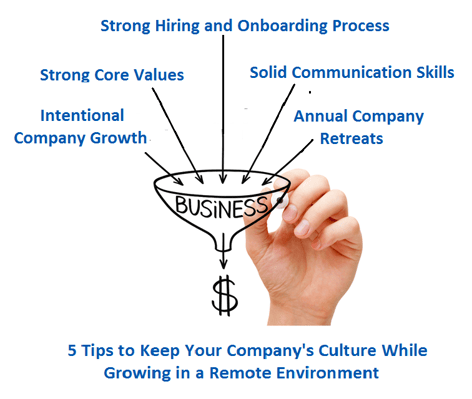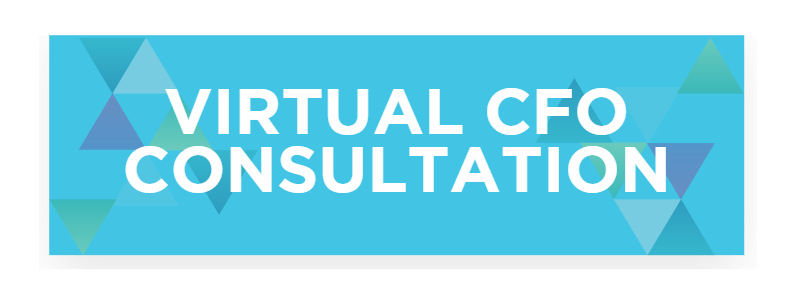There are a few buzz words going around in the industry right now—remote or distributed workplace, success, and culture. But what do these hot-topic trends mean?
It’s no surprise that businesses of all kinds had to work from home when the world shut down from COVID, whether they wanted to or not. Now, businesses are exploring remote work environments and taking advantage of the tools and resources that evolved during the pandemic.
Every business owner wants the same thing for their business: success. Nobody wants a stagnant business, right? Success is often measured by growth, but do you think business owners ever stopped to strategically plan or think about how they want to grow? Sure, fast growth can be good in the short term, but it can have pitfalls in the long run. One thing that is often overlooked when you are growing too fast is how to keep your desired culture as you grow.
If the pandemic taught us anything, it’s that culture is important to a company’s identity and the way it is viewed, not only by their customers but also its employees. A company’s culture can make all the difference in employee retention, sourcing top-quality talent for a position, or giving value and purpose to company stakeholders.
So how do you do all these things—take advantage of a distributed environment, grow your business, keep its culture—successfully? Here are five ways to keep your company’s culture while scaling its growth in a remote environment.
1. Have a strong hiring and onboarding process.
The hiring and onboarding process is different in a remote environment. You don’t meet the person face to face or shake their hand. How do you get to know the candidate via Zoom and ensure they are a good fit?
From the initial interview, and any communication thereafter, bring the company’s culture into each step. You want to make sure that everyone is on board with your company’s core values from the very beginning. During the interview process, talk about your culture and your core values. It is very important to frame your questions around your core values. Finally, ask questions that encourage candidates to answer based on their personal set of values so you can determine if they are closely aligned.
If it’s possible for the position you’re hiring for, include a skills assessment. This will add steps between the application and the first interview and may eliminate candidates who aren’t excited about the opportunity. You want to invest in that person and hope that they will advance and grow with the company.
When you move to the onboarding process for a new employee, use different ways to teach them, as everyone learns differently. Include such things as modules so that they can work independently but also have them shadow you or a colleague on a conference call.
We have found that we have better success and employee retention when we give different options to learn new content; it's not one size fits all. That's where people start to fail—when we assume everyone learns the same way.
I also suggest having check-ins during their first three months. At Summit during the first three months, I meet with a new team member several times a week, and so does a member from our HR department. We also do biweekly formal check-ins where we use a method called “stop, start, and continue.” In this meeting, we start with the new member providing items that need to stop, start, and continue. These can be items for themselves or what they would like to see as part of their onboarding.
We also have existing team members discuss what we would like them to stop, start, and continue. This is a great way to keep an open line of communication and be transparent as they are getting acclimated to the Summit culture.
2. Instill strong core values in the company’s culture.
Once your employee is hired and has gone through the onboarding process, you want them to mirror the company’s culture, and maintain those core values through their employment with your company. They could be there for a year or 10 years; whatever their tenure, you want them to be the ambassadors of those core values because they represent your company during their employment.
And each company’s core values are different. It’s all about how you want to conduct your life, professionally and even personally. These need to be well thought-out values that represent your company and its mission. For example, Summit’s core values are curiosity, humor, collaboration, adaptability, empowerment, and candor. You will not find a Summit employee who does not represent these values.
When you see an employee or colleague displaying a core value of the company, take note. Even better, call them out and celebrate it. It’s one of the best ways to boost morale. In a remote environment where you don’t physically see someone, this can be easy to overlook. But if you notice it on an email, Teams chat or in a meeting, take time to notice it and give them a shout out!
3. Foster solid communication skills among team members.
Communication and transparency are so important in a remote work environment. The key is being super intentional with it. Have team meetings and one-on-one meetings every week. As your business grows, this will become difficult to maintain, but meeting via video conference (yes, with the camera on) is so important to all aspects of a remote world.
If your company is already too large to meet with everyone one-on-one, then make sure your leadership team is taking the time to meet with each member of their team. It’s easy to feel disconnected when you work from home, so employees really value the set time where they feel heard.
The entire Summit team meets every Monday. The intention of this meeting is simply to connect with each other—cameras on of course. The docket includes a joke of the day, a fun fact, and a topic.
For example, last week’s topic was “If you could only eat one food every day for the rest of your life, what would it be?” I know what you’re thinking, “Jamie, what the heck does this have to do with accounting?” NOTHING.
It’s simply about coming together to learn something new about colleagues who live in another state, or even another time zone.
We need to be intentional about getting to know each other because if we don’t, it won't happen. Summit employees understand that. These meetings not only embody our culture; they develop it and set a strong foundation for what it means to work at Summit.
4. Gather remote employees for annual company retreats to nurture strong relationships.
If you don't meet somebody in person, it can be hard to humanize them. There’s no real connection. You can simply shut your laptop at the end of the day. Summit has one company-wide retreat annually. The location is different each year. All employees come together for four or five days to hang out and meet in person—some for the very first time.
While there is a set agenda, the purpose isn’t really to learn, although that’s something that you want to involve in some way; it's more about getting to know each other on a personal level and build those relationships while you're there and bring them back to the remote environment.
When you're working with only one or two people, that’s how big your company is. But when you go to the retreat, you must meet everybody. Then you start asking questions from everyone else more than your regular day-to-day work. It makes that experience even better and bigger because people stay at work because they meet friends. They want to make those relational connections.
In addition, Summit does a directors’ retreat annually. This one is more business focused, but our families are invited. It’s a great opportunity to get together as a leadership team, peel back the layers, and see how colleagues interact with their families. Again, there’s a human aspect of it that you just can’t get in a remote environment.
5. Be intentional about the company’s growth.
When Jody and Adam started Summit, I’m sure they had a tight-knit culture. During my eight years at Summit, I can honestly say the culture is tight knit. I’m sure it’s changed and morphed a little in the past two decades, but my point is that there is a very real sense of purpose and culture that is almost tangible.
The problem, however, that some start-up businesses run into is that they start growing too fast. And in the moment, it probably feels great to have this surge of growth; you’re hiring new people to keep up with the demand, and the business is generating revenue.
But when you’re not intentional about it, you can hire people who don’t really embody your core values or the culture. While your short-term goal is to hire someone to keep up with the company’s growth, the long-term is to build a team whose values align with the business. If your culture doesn’t remain and is allowed to ebb and flow as employees come and go, there is no sense of value or purpose.
If you don't want to get to that point, you have to be intentional about the company’s growth. And hold yourself (if you’re the business owner) and the leadership team accountable.
.png?width=190&height=122&name=Summit-Virtual-CFO_color_rgb%20(1).png)















Leave a comment